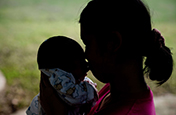'We must never forget the history'
By CANG WEI and SONG WENWEI in Nanjing (China Daily) Updated: 2012-12-14 04:01One old soldier is still fighting, but this time his enemy is the passing of time and fading memories as he tries to make sure that events that occurred in Nanjing 75 years ago never escape public attention.
Then a teenager, Li Gaoshan, 88, fought, and was captured by, the Japanese during the Nanjing Massacre, and he is determined that the events that took place between December 1937 and March 1938 will never fade from memory. More than 300,000 Chinese civilians and disarmed soldiers were killed.
![Soldiers carry a wreath during a ceremony marking the 75th anniversary of the Nanjing Massacre on Thursday in Nanjing, capital of Jiangsu province. [Photo/Agencies] 'We must never forget the history'](../../images/attachement/jpg/site1/20121214/0023ae9885da12349b7715.jpg) |
|
Soldiers carry a wreath during a ceremony marking the 75th anniversary of the Nanjing Massacre on Thursday in Nanjing, capital of Jiangsu province. [Photo/Agencies] |
Li, one of three soldiers still alive who survived the massacre, works as a volunteer at the memorial hall dedicated to the massacre.
He goes to the hall every Friday to share his experience with visitors.
"I have outlived many people I knew," said Li on Thursday, the massacre's 75th anniversary.
"I want to carry on and serve as a witness, since Japan's right-wingers haven't changed their attitude.
"My testimony is more powerful while I'm still alive," Li said.
Fewer than 200 survivors of the massacre are still alive, according to Zhu Chengshan, director of the memorial hall.
"At the beginning of 2011 the number was still over 300," Zhu said. Documenting their memories is important, he said.
Li was only 13 when the Japanese army overran Nanjing in 1937. He was captured but survived what was meant to be his execution when the Japanese raked the building the prisoners were being held in with machine-gun fire.
"I climbed out from a heap of bodies and then hid on the roof of the building for several days. I had no food or water."
Li went to Japan in 1996 to share his testimony and has worked for the memorial hall as a volunteer since 2004.
Authorities in Nanjing have launched a number of surveys to record for posterity the harrowing accounts of the survivors.
The first survey, conducted in 1984 and 1985, found that 1,756 survivors were still living in the city. In 1997, however, more than 400 had died.
In 2007, another survey carried out by more than 14,700 college students in 15 of the city's districts and counties gathered key testimony and evidence from 5.7 million people.
Related photos:
- Nanjing Massacre victims remembered in E China
- Nanjing Massacre book to be released
- Historic data of Nanjing Massacre restarts applying for UNESCO's program
- Nanjing Massacre video compilation progressing
- UN program may preserve memory of Nanjing massacre
- Proposal: Denial of Nanjing Massacre a crime
- 10 movies about the Nanjing Massacre
- Beijing 'will never' halt island work
- Rain keeps the floods coming
- 8,000 schools in UK to add Chinese math system
- AIDS education project for students passes the test
- Artificial sun kindles prospects for mission to Mars
- Young sex not taboo for children of fishermen; pregnancy poses problems
- Suspected smuggler repatriated from Peru after 18 years
- Talks are key to resolving disputes, says Vietnam
- Sovereignty of China is 'bottom line'
- Young job seekers hope to find fame









